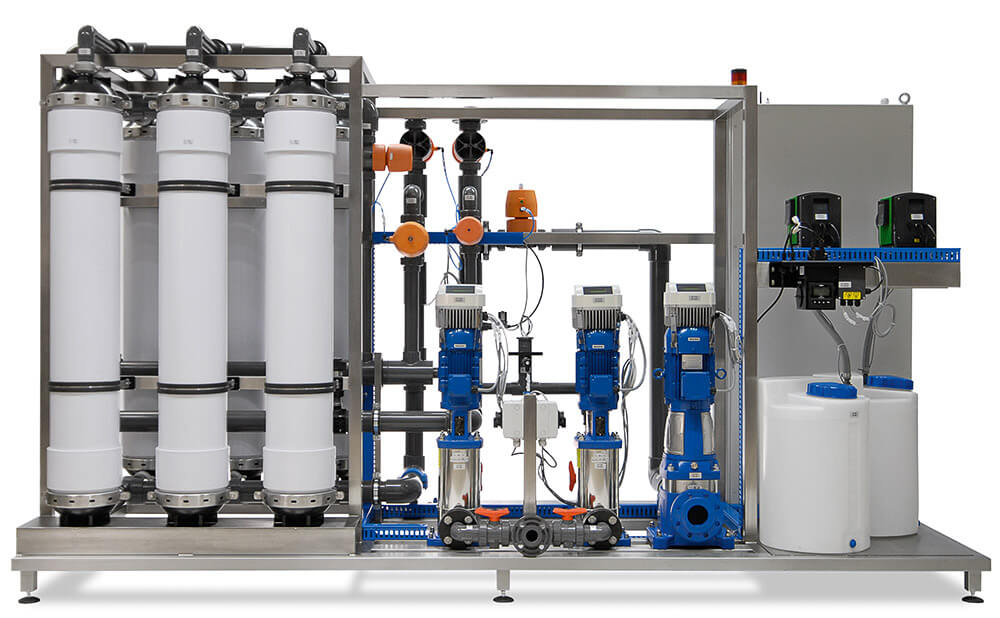


Ultrafiltration (UF) utilizes a semi-permeable membrane to physically remove suspended particles from water based on particle size and the pore size rating of the UF membrane. Among membrane technologies commonly used, UF is typically one step “tighter” (meaning it has smaller pore size) than microfiltration.
Membranes tighter than UF are Nano Filters and Reverse Osmosis.
Nano filtration and reverse osmosis membranes can remove dissolved ions in addition to suspended solids while UF membranes cannot remove dissolved ions. UF membranes are available in a range of “tightness” or pore sizes and are typically specified based on the molecular weight cutoff, expressed in Daltons, to describe size of molecules they will allow to pass through the membrane. Because of the large pore size, much lower pressure is used to force fluid through the UF membrane as compared to Nano, Reverse osmosis or Micro filters.
Ultrafiltration Applications: Due to difficulty in consistently removing very small particles using conventional water treatment, and increased concerns about chlorine-resistant organisms (e.g., Giardia, Crypto), ultrafiltration is increasingly becoming the method of choice for municipal water treatment plants.
Ultrafiltration is very effective in removing tiny particles which can quickly foul reverse osmosis membranes, thus reducing the silt density index of the water. For this reason, it frequently serves as pretreatment for surface water, seawater, and biologically treated municipal water upstream of RO.
UF is also used in industry to separate suspended solids from solution. Industrial applications include power generation, food and beverage processing, pharmaceutical production, biotechnology, and semiconductor manufacturing.
UF modules can be supplied in vertical or horizontal arrangement.
